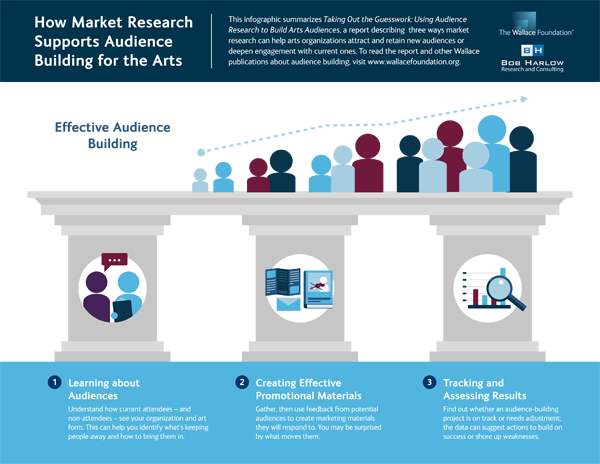The Wallace Foundation has released a guide designed to help arts organizations use market research to identify ways to build meaningful connections with different audiences. Taking Out the Guesswork: A Guide to Using Research to Build Arts Audiences draws on evidence gathered from 10 organizations across the United States, including visual arts institutions, theaters, dance and opera companies. The guide provides valuable insight and detailed guidelines on how to learn more about current and potential audiences, create effective promotional materials, and more effectively track and assess the results of new audience-building initiatives.
GIA Blog
The President's Committee on the Arts and the Humanities (PCAH) will expand its successful Turnaround Arts initiative into five additional school districts, as the program continues to successfully help turn around low-performing schools, narrow the achievement gap, and increase student engagement through the arts, announced the committee's co-chairs, George Stevens, Jr. and Margo Lion. This follows 2014's major expansion of the program after a Booz Allen Hamilton evaluation of the program's effectiveness.
By Mark MacNamara, at San Francisco Classical Voice:
Jerome Foundation and Camargo Foundation have announced that Ben Cameron has been appointed president of both foundations, and will be working primarily in the US offices in Saint Paul, Minnesota. He will take these positions on January 4, 2016. “Ever since my years in the Twin Cities in the 1990s, I have admired the extraordinary leadership of the Jerome Foundation, long one of the most important arts foundations in Minnesota and New York, and its incredible President, Cynthia Gehrig,” Cameron said.
For the month of June, GIA's photo banner features work and projects sponsored by Creative Work Fund. With assistance from other generous funders, the Walter & Elise Haas Fund has managed the Creative Work Fund (CWF) for 21 years.
The CWF supports artists making new work through collaboration with nonprofit organizations of any kind, and demands payment of those artists. Over time, the ways artists and nonprofits organize themselves and make work has evolved, but they still find collaboration to be powerful and continue responding to the CWF with inspiring ideas. Since its inception, the CWF has awarded $10.1 million in grants.
By Janet Brown from her blog Better Together
Grantmakers in the Arts released its Statement of Purpose for Racial Equity in Arts Philanthropy in March 2015. It did not spring from thin air. Members concerned with social justice have been active within GIA for nearly a decade. Over the past six years, members have shown an overwhelming interest in equity issues facing their communities. Racial equity was deliberately selected four years ago for a thought leader forum in order to go deeper into one area of social justice. Two years later after several convenings of the social justice forum group, the GIA board of directors adopted racial equity in arts philanthropy as “core field work” and began its own training and preparation for a public statement and actionable steps.
The Institute of International Education has announced the launch of a program to save the lives and work of artists who face persecution in their home countries. The new Artist Protection Fund (APF), a three-year pilot program supported by a $2.79 million grant from The Andrew W. Mellon Foundation, will make life-saving fellowship grants to threatened artists from any field of artistic endeavor, and place them at host universities and arts centers in countries where they can safely continue their work and plan for their future.
From Craig Watson, Director of the California Arts Council:
From Elizabeth Kramer at The Courier-Journal:
From Francine Toder, Ph.D., writing for Huffington Post:


